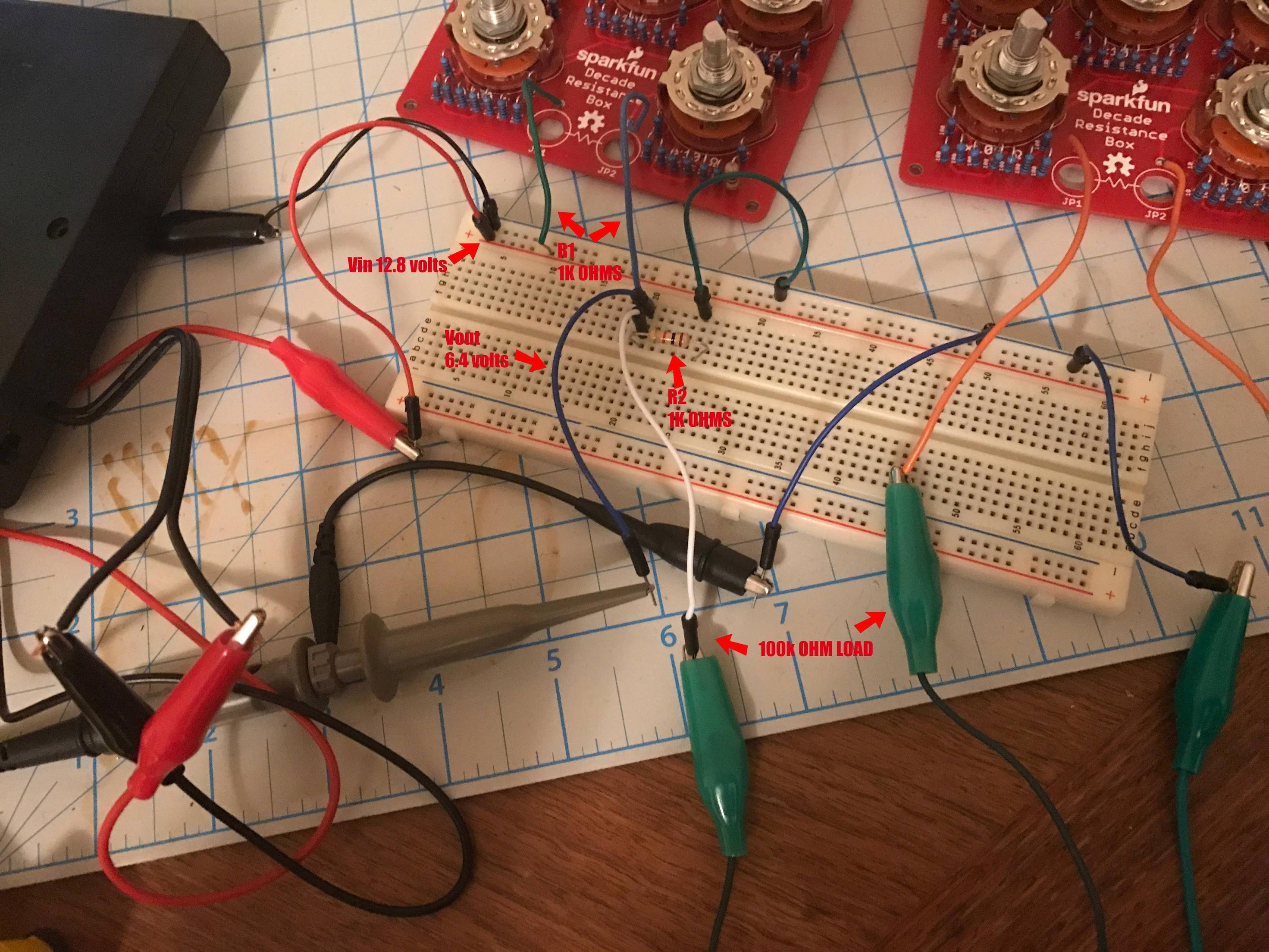So right now I'm learning about RThevenin and VThevenin of a circuit and how to calculate what the voltage will be once you load the circuit. I am trying to build this circuit:
I am not using these values though. I am using Vin 12.8 volts from a 8AA battery pack. I picked this power supply because I wanted something that I know could fluctuate. For R1 and R2 I am using 1k ohms. For my RL load I am using 100k ohms. The Vout is 6.4 volts with the voltage divider of R1 and R2. Now here is my question... If I put the Rl load (100k ohms) also with the voltage divider shouldn't the Vout or the Vin become a lot lesser than 12.8 or 6.4?
Here is how I wired up the circuit:

Thank you for any help guys :)

